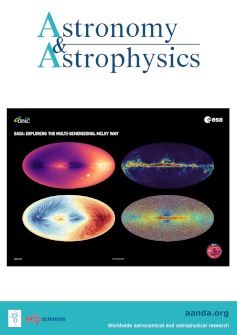The dynamical history of the Kepler-221 planet system
IF 5.4
2区 物理与天体物理
Q1 ASTRONOMY & ASTROPHYSICS
引用次数: 0
Abstract
Kepler-221 is a G-type star hosting four planets. In this system, planets b, c, and e are in (or near) a 6:3:1 three-body resonance even though the planets’ period ratios show significant departures from exact two-body commensurability. Importantly, the intermediate planet d is not part of the resonance chain. To reach this resonance configuration, we propose a scenario in which there were originally five planets in the system in a chain of first-order resonances. After disk dispersal, the resonance chain became unstable, and two planets quickly merged to become the current planet d. In addition, the (b, c, e) three-body resonance was re-established. We ran N body simulations using REBOUND to investigate the parameter space under which this scenario can operate. We find that our envisioned scenario is possible when certain conditions are met. First, the reformation of the three-body resonance after planet merging requires convergent migration between planets b and c. Second, as has been previously pointed out, an efficient damping mechanism must operate to power the expansion of the (b, c, e) system. We find that planet d plays a crucial role during the orbital expansion phase due to destabilizing encounters of a three-body resonance between c, d, and e. A successful orbital expansion phase puts constraints on the planet properties in the Kepler-221 system including the planet mass ratios and the tidal quality factors for the planets. Our model can also be applied to other planet systems in resonance, such as Kepler-402 and K2-138.求助全文
约1分钟内获得全文
求助全文
来源期刊

Astronomy & Astrophysics
地学天文-天文与天体物理
CiteScore
10.20
自引率
27.70%
发文量
2105
审稿时长
1-2 weeks
期刊介绍:
Astronomy & Astrophysics is an international Journal that publishes papers on all aspects of astronomy and astrophysics (theoretical, observational, and instrumental) independently of the techniques used to obtain the results.
 求助内容:
求助内容: 应助结果提醒方式:
应助结果提醒方式:


